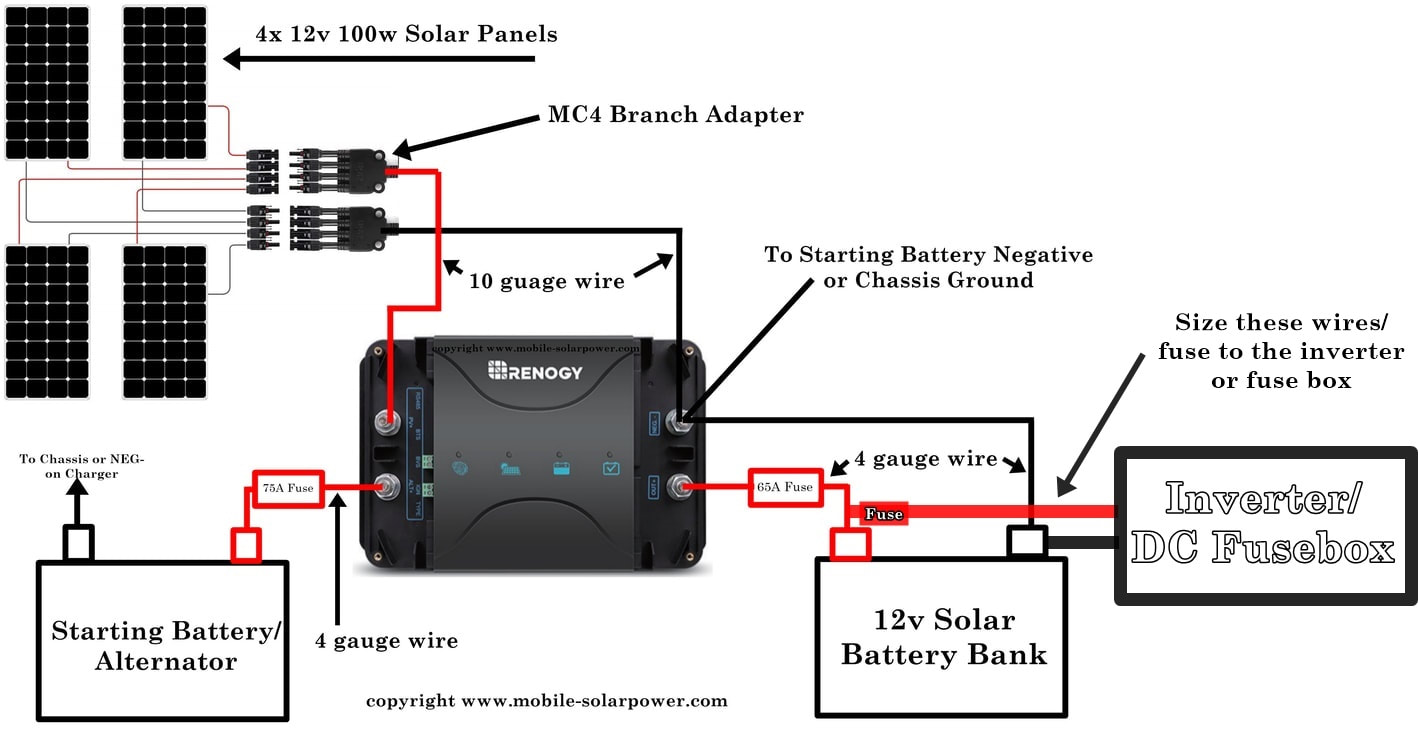Hi! I'm finalizing my van life setup and was hoping someone could give some advice. Here's what I'm thinking:
4 x 12v 100ah lithium batteries, Renogy (already purchased)
3000w 12v purse sine inverter/charger, Renogy (went a bit larger for potential future expansion purposes)
What I am struggling on, is my b2b set up and solar/MPPT charger set up.
I originally purchased Renogy's DCC50S 12V 50A DC-DC On-Board Battery Charger with MPPT because I liked the fact that it was a DC/DC and MPPT all in one - being a newbie it was less intimidating, however, the more I read up on it, the more I am thinking this will not really work too well. Reason being, is that while it is advertised as 50a, it is in fact 25a and 25a when you are using it for both a b2b and a MPPT.
If I used this with 100w 12v panels, let's say 2 or 3 of Renogy's, wired in series, it would be:
24v/16.7a or 36v/16.7a respectively
To my understanding, because Renogy's 50a charger is 12v, this would not work. I would have to wire in parallel (which is of course more wiring etc to understand for a noob), but even if I did, it would be:
12v/33.4a or 12v/50.1a
Because the MPPT caps out at 25a when also using the b2b, I would essentially be limited/missing out, no? For this reason, I am thinking it would make more sense to return this and go with Victron, either their 100v/30a or 100v/50a. This way I also have the ability to expand in the future if I choose.
Does this all make sense, am I doing this correctly or is my math wrong somewhere? And if I go this Victron route, does anyone recommend a specific dcdc charger for a 2018 Ram Promaster 2500 with 400ah lithium? Any input someone more experienced can give would be greatly appreciated!
Note: We will be running quite a bit and working from the van full-time, hence our system is on the larger size for a van.
4 x 12v 100ah lithium batteries, Renogy (already purchased)
3000w 12v purse sine inverter/charger, Renogy (went a bit larger for potential future expansion purposes)
What I am struggling on, is my b2b set up and solar/MPPT charger set up.
I originally purchased Renogy's DCC50S 12V 50A DC-DC On-Board Battery Charger with MPPT because I liked the fact that it was a DC/DC and MPPT all in one - being a newbie it was less intimidating, however, the more I read up on it, the more I am thinking this will not really work too well. Reason being, is that while it is advertised as 50a, it is in fact 25a and 25a when you are using it for both a b2b and a MPPT.
If I used this with 100w 12v panels, let's say 2 or 3 of Renogy's, wired in series, it would be:
24v/16.7a or 36v/16.7a respectively
To my understanding, because Renogy's 50a charger is 12v, this would not work. I would have to wire in parallel (which is of course more wiring etc to understand for a noob), but even if I did, it would be:
12v/33.4a or 12v/50.1a
Because the MPPT caps out at 25a when also using the b2b, I would essentially be limited/missing out, no? For this reason, I am thinking it would make more sense to return this and go with Victron, either their 100v/30a or 100v/50a. This way I also have the ability to expand in the future if I choose.
Does this all make sense, am I doing this correctly or is my math wrong somewhere? And if I go this Victron route, does anyone recommend a specific dcdc charger for a 2018 Ram Promaster 2500 with 400ah lithium? Any input someone more experienced can give would be greatly appreciated!
Note: We will be running quite a bit and working from the van full-time, hence our system is on the larger size for a van.



